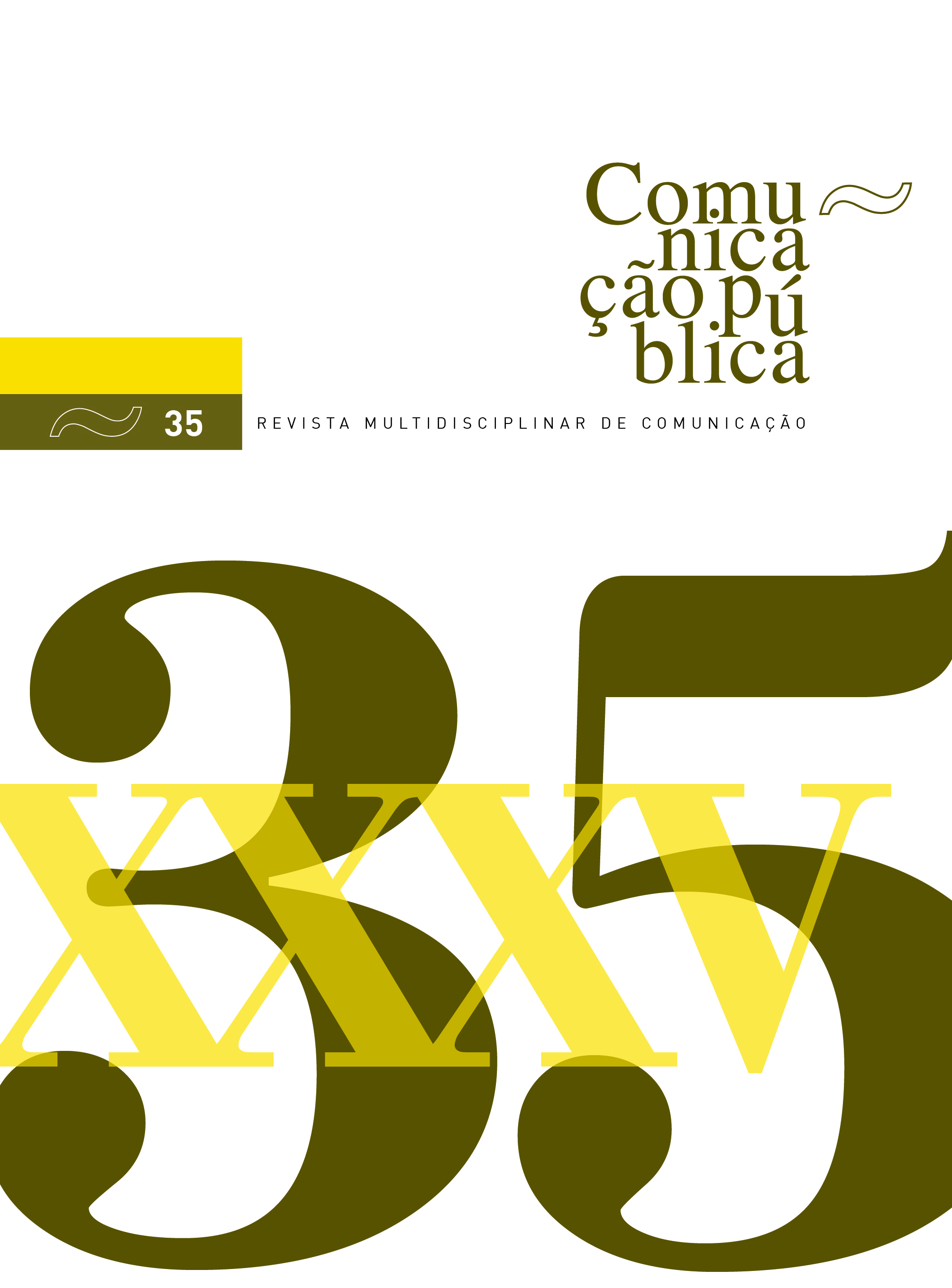Social semiotics in the construction of media reality
analysis of the representation of Azoreans
DOI:
https://doi.org/10.34629/cpublica.781Keywords:
Azores, seismovulcanic crisis, multimodality, representation, news-valuesAbstract
In March 2022, a seismovulcanic crisis began in the Azores and devastated the island of São Jorge. Despite the daily earthquakes and the imminence of a volcanic eruption, many Azoreans decided not to leave the island. Thus, the purpose of this study is to interpret how Azoreans are represented in the context of a seismovulcanic crisis. To do so, the methods used were, firstly, the critical analysis of the literature in the scope of the criteria of noticiability (Galtung & Ruge, 1965; Harcup & O'Neill, 2017; Traquina, 2002; Wolf, 1987), which determine the value that an event has to become news, and, then, the multimodal analysis (Jewitt & Henriksen, 2016; Kress, 2011) of a television report, in order to understand the meanings and intentions with which the different semiotic modes produce a certain representation about this community.
Downloads
References
Aumont, J. (2009). A imagem. Texto & Grafia.
Aumont, J., & Marie, M. (2009). Dicionário teórico e crítico do cinema. Texto & Grafia.
Bignell, J. (1997). Media semiotics: An introduction. Manchester University Press.
Coelho, P. (2021). A imagem – elemento âncora da reportagem. In P. Coelho, A. I. Reis & L. Bonixe (Org.), Manual de Reportagem (pp. 163-184). Editora LabCom. https://labcom.ubi.pt/ficheiros/20210115945-202009_manualreportagem_pcoelhoireislbonixe.pdf.
Galtung, J. & Ruge, M. H. (1965). The structure of foreign news: The presentation of the Congo, Cuba and Cyprus crises in four norwegian newspapers. Journal of Peace Research, 2(1), 64-90. https://journals.sagepub.com/doi/abs/10.1177/002234336500200104.
Ganz, P. (1995). A reportagem em rádio e televisão. Editorial Inquérito.
Gardies, R. (Org.). (2008). Compreender o cinema e as imagens. Texto & Grafia.
Golding, P. & Elliott, P. (1996). News values and news production. In P. Marris & S. Thornham (Eds.), Media Studies: a reader (pp. 632-644). Edinburgh University Press.
Hall, S., Chritcher, C., Jefferson, T., Clarke, J. & Roberts, B. (1993). A produção social das notícias: O mugging nos media. In N. Traquina (Org.), Jornalismo: Questões, teorias e “estórias” (pp. 224-248). Veja.
Harcup, T. & O’Neill, D. (2017). What is news? News values revisited (again). Journalism Studies, 18(12), 1470-1488. http://doi.org/10.1080/1461670X.2016.1150193.
Jespers, J. J. (1998). Jornalismo televisivo: princípio e métodos. Minerva editora.
Jewitt, C. & Henriksen, B. (2016). Social semiotic multimodality. In N. Klug & H. Stöckl (Eds.), Handbook of language in multimodal contexts (pp. 145-164). De Gruyter. https://doi.org/10.1515/9783110296099.
Kress, G. (2011). Multimodal discourse analysis. In J. Gee & M. Handford, The Routledge Handbook of discourse analysis (pp. 35-50). Routledge. https://www.routledgehandbooks.com/doi/10.4324/9780203809068.ch3.
Mesquita, M. (2004). O quarto equívoco – O poder dos media na sociedade contemporânea (2.ª ed.). Minerva Coimbra.
Oliveira, J. N. (2007). Manual de jornalismo de televisão. Cenjor.
Oliveira, M., Sena Santos, F. & van der Kellen, M. (2021). O som – elemento âncora da reportagem. In P. Coelho, A. I. Reis & L. Bonixe (Org.), Manual de Reportagem (pp. 147-161). Editora LabCom. https://labcom.ubi.pt/ficheiros/20210115945-202009_manualreportagem_pcoelhoireislbonixe.pdf.
RTP. (2015). Contrato de concessão do serviço público de rádio e de televisão. https://media.rtp.pt/empresa/wp-content/uploads/sites/31/2015/07/contratoConcessao2015.pdf.
Traquina, N. (2000). O poder do jornalismo: Análise e textos da teoria do agendamento. Minerva.
Traquina, N. (2002). O que é jornalismo. Quimera.
Van Leeuwen, T. (2005). Introducing social semiotics. Routledge.
Wolf, M. (1987). Teorias da comunicação. Editorial Presença.
Downloads
Published
Issue
Section
License
Copyright (c) 2023 Direitos do Autor (c) 2023

This work is licensed under a Creative Commons Attribution-NonCommercial 4.0 International License.
Os conteúdos da Comunicação Pública estão licenciados com uma licença Creative Commons - Atribuição-NãoComercial 4.0 Internacional.


